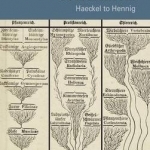Phylogenetic Systematics: Haeckel to Hennig
BookThis item doesn’t have any media yet
2016 | Science & Mathematics
Phylogenetic Systematics: Haeckel to Hennig traces the development of phylogenetic systematics against the foil of idealistic morphology through 100 years of German biology. It starts with the iconic Ernst Haeckel-the German Darwin from Jena-and the evolutionary morphology he developed. It ends with Willi Hennig, the founder of modern phylogenetic systematics. Written in English, the book presents a unique perspective on a vast body of German biological literature. The book also offers a perspective on German biology in the Third Reich. The author looks at how idealistic morphology and phylogenetic systematics represented two antagonistic traditions in German biology, the first organicist-holistic, the latter empiricist-positivistic. In addition, he explains the ways in which both traditions acquired socio-political and ideological connotations, culminating in their accommodation to different strands of Nazi ideology.
The book's nine chapters summarize a century of the conceptual development of systematics, describe both the history and philosophy of phylogenetic approaches to the understanding of the history of life, examine the role of important people such as Haeckel, Gegenbauer, Portman, von Bertalanffy, Stresemann, and Hennig, and critically evaluate the impact and influence of Nazism on evolutionary biology. Chapter titles include: The Evolutionary Turn in Comparative Anatomy; Of Parts and Wholes; The Turn against Haeckel; The Rise of Holism in German Biology; The Rise of German ("Aryan") Biology; Ganzheitsbiologie; The Ideological Instrumentalization of Biology; A New Beginning: From Speciation to Phylogenetics; and Grundzuge: The Conceptual Foundations of Phylogenetic Systematics.
Related Items:
| Published by | Taylor & Francis Inc |
| Edition | Unknown |
| ISBN | 9781498754880 |
| Language | N/A |
Images And Data Courtesy Of: Taylor & Francis Inc.
This content (including text, images, videos and other media) is published and used in accordance
with Fair Use.
